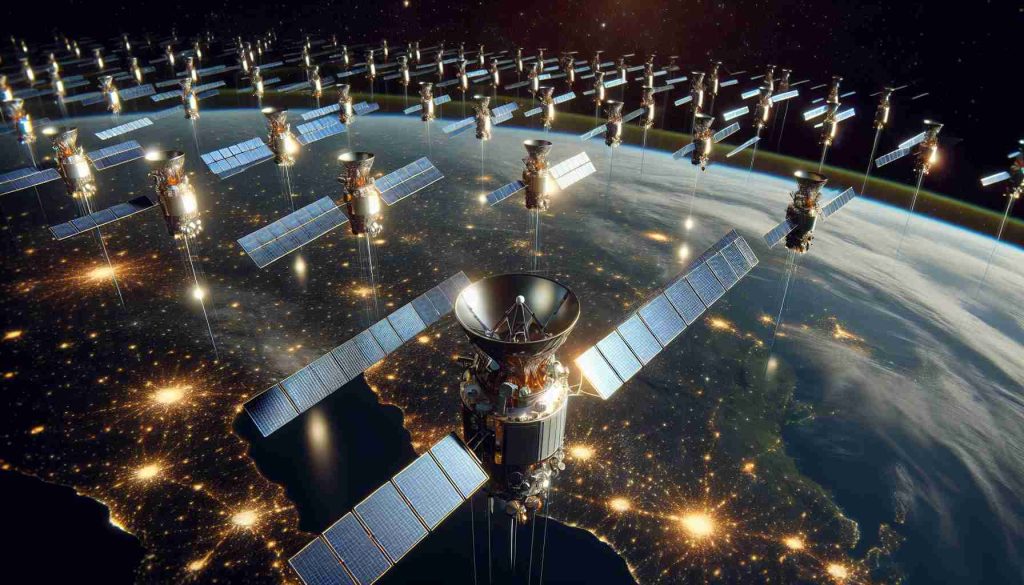
In recent developments within the telecommunications field, SpaceX has successfully launched a new batch of Starlink satellites, aiming to bolster global internet connectivity. The new Starlink V2 Mini satellites represent the company’s ongoing commitment to bridging the digital divide by delivering high-speed internet to remote locations around the world. This launch, carried out from Launch Complex 39A in Florida, is another testament to SpaceX’s innovative reuse of launch vehicles, with the Falcon 9 rocket’s first stage returning to a droneship post-launch.
Summary: SpaceX’s contribution to the satellite broadband industry with the recent successful deployment of Starlink satellites is set to revolutionize global internet access. This move promises to increase connectivity in undeveloped areas, challenging traditional internet service providers, and cementing the company’s focus on sustainability.
Industry experts are monitoring the satellite broadband market with great interest, observing a burgeoning demand for better internet services, particularly in far-flung regions. Projections indicate a potential boom in the industry’s revenues over the next ten years. The successful deployment by SpaceX showcases the advancements being made to address the connectivity needs of unserved populations.
However, as the skies become more crowded with satellites, the issue of space debris management and the need for comprehensive international regulations is becoming more pronounced. The maintenance of a sustainable low Earth orbit environment and the prevention of radiofrequency interference are important challenges facing the industry.
SpaceX, with its Starlink initiative, is at the forefront of this transformative phase, offering a sustainable approach to satellite deployment. The company’s efforts are expected to contribute significantly to making global internet coverage a reality, a prospect that could change the lives of billions currently without stable internet connections.
For deeper insights into the unfolding story of satellite broadband and its implications for global connectivity, observers are encouraged to seek information from established sources, including SpaceX and other influential entities in the burgeoning space industry. With the landscape rapidly evolving, staying informed is crucial for understanding these critical telecommunication advancements.
SpaceX’s Starlink V2 Mini satellites and the Satellites Broadband Industry
SpaceX’s launch of Starlink V2 Mini satellites as part of their greater Starlink constellation represents a turning point in the satellite broadband industry. As global demand for internet connectivity increases, the market for satellite broadband is experiencing unprecedented growth. Market forecasts are optimistic, with predictions of extensive expansion within the next decade. Analysts expect that this surge will be driven primarily by the need for high-speed internet services in rural and remote locations. These are areas where terrestrial broadband providers have historically found it unfeasible to deploy infrastructure.
The satellite broadband sector is increasingly competitive. New players and established satellite operators are both looking to capture part of the market. This competition is spurring technological innovations and driving down costs, making satellite internet more accessible to consumers.
Issues in the Satellite Broadband Industry
Despite this growth, the industry does grapple with certain challenges. The mounting concern over space debris demands a robust response to ensure safe and sustainable use of space. An increase in satellite launches entails a higher risk of collisions that can generate debris, threatening other satellites and spacecraft.
Furthermore, the issue of radiofrequency interference looms large. With more satellites being deployed, coordinating frequencies to prevent disruption of signals is becoming an intricate task. Stakeholders in the industry advocate for comprehensive international regulations to mitigate these risks.
SpaceX, meanwhile, continues to play a pivotal role. Its focus on reusability and innovation in launch technology has set it apart, reducing costs and environmental impact. With Starlink, SpaceX is not just expanding internet access but is also considered to lead in efforts to make the space more sustainable.
As the industry evolves, it is essential to stay updated with the latest news and reports from reliable sources in the field. For more information and continuous updates on SpaceX’s Starlink program and industry trends, consider visiting SpaceX.
For those keen to delve further into the universe of satellite broadband and understand its potential impact on global connectivity, it’s imperative to follow the industry’s trajectory through credible portals and resources. The rapid changes in the telecommunication landscape underscore the significance of these developments and their broader implications for connectivity worldwide.

Natalia Toczkowska is a notable figure in digital health technology, recognized for her contributions in advancing telemedicine and healthcare apps. Her work focuses on developing innovative solutions to improve patient care and accessibility through technology. Toczkowska’s research and development in creating user-friendly, secure digital platforms have been instrumental in enhancing the effectiveness of remote medical consultations and patient monitoring. Her dedication to integrating technology in healthcare has not only improved patient outcomes but also streamlined healthcare processes, making her a key influencer in the field of digital health innovation.




